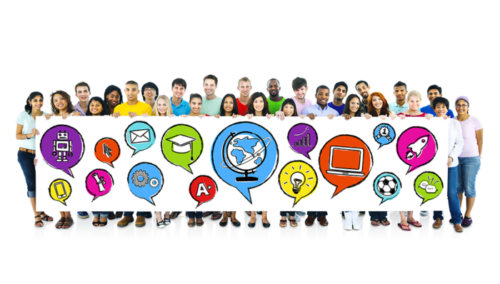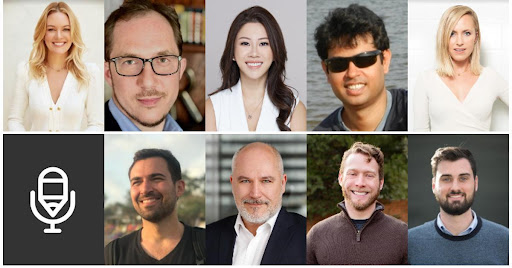Resignation is part of the employee circle. Watching a valuable employee go can be hard on you and the business. This isn’t just because of the lost productivity and value, but also the reason for leaving. We carry out exit interviews to find out why. Companies carry them out to get valuable exit interview data and act on them. Sadly, most companies carry out exit interviews as a mere ritual, and as for the data, it sits away collecting dust.
These oversights by companies have led to them losing more valuable employees. And in the long run, they lose a competitive advantage. This article will explain exit interviews, their importance, tips for conducting productive exit interviews, and what to do with exit interview data.
What is an Exit Interview?
It is an interview conducted by an organization after an employee submits their resignation. This interview takes place some weeks or days before the employee mentally checks out. It is typically seen as an HR activity and often conducted by them. However, a mentor or supervising manager can also conduct exit interviews.
Why Conduct An Exit Interview?
There are a lot of reasons to conduct exit interviews and act on their data. One of the popular misconceptions organizations believe is that they can’t get reliable information from the exit interviews of employees. The notion of employees being bitter, biased, or secretive by most top management makes them believe paying attention to the activity and the data isn’t worth it. Unfortunately, this idea doesn’t stand as there are noticeable benefits of conducting an exit interview.
Here are some which we will discuss in this section.
Also Read: How to Accurately Leverage the STAR Interview Method for 2024?
-
Gain Constructive Feedback
Feedback from exiting employees is valuable. Expect to hear some constructive feedback from them as they have nothing to lose. Probably you will receive some level of criticism. It’s best to listen and take notes of all they are saying, as their perspectives and views are necessary for the improvement and growth of the company. It’s also best not to make them personal and be as objective as possible when asking the questions.
-
Employee Pain Points
You can also gain insight into those areas that are big turnoffs or problems for employees. Carefully crafting the questions can lead to some insightful revelations about the pressing needs of employees and possible ways of addressing them.
-
Identifying Patterns
Losing 5-10 percent of your workforce to resignations or transfers in a year is reasonable, but having 30-50 percent of your employees resigning calls for a strategic change from management. Analyzing exit interview data presents useful trends for why employees leave the company.
Trends may include inadequate compensation compared to the industry benchmark, toxic managers, or limited growth in the firm. It may also be the combination of some or all of the above.
-
Convert Ex-Employees to Ambassadors
If an exit interview is conducted right, it can lead to the employees feeling good about the company. Companies should understand not all resignations have to lead to a bad break-up between employer and employee. It can also be a way of establishing a good relationship, especially if the employee has a lot of potential for continuous growth. Doing this leaves a good lasting impression on the employee, leading to them speaking in a positive light when talking about your organization. And who knows, the person can make a return in the future.
-
A Cheap and Effective Method
Honestly, this method is a cost-effective way of getting valuable insights into how the company operates. Although individual feedback may not mean much, collecting and analyzing them can be a powerful tool when creating strategic plans for the future. And all this information comes at little to no cost.
Also Read: How to Conduct a Value-Based Interview in 2024 – Pro Tips
Tips to Note When Conducting an Exit Interview
As part of an off-boarding process, exit interviews play an important role. And that’s why we must first identify the best practice to get valuable information from outgoing employees.
-
The Exit interview
According to research by Harvard Business Review, 92% of Asian- Pacific companies make their interviews mandatory for all employees, while 64% of Central/South American companies conduct them. This research shows not all companies think mandatory exit interview is necessary. Although some companies interview a subset of employees. These subsets are usually top performers, future talents, or departments with high employee turnover.
Smaller companies can afford to conduct exit interviews for most of their employees, while large corporations specialize in some or all of the subsets. Where possible, allow all employees to have an exit interview – except in situations they decline to have one.
-
Interview Format
An interviewee should be comfortable during the exit interview. And that will mean choosing the best format for the exit interview. It will help if the employee has the option to pick the interview format they are comfortable with. This gives them a sense of control, makes them relaxed.
While it’s ideal to aim for a face-to-face conversation, not all employees are ready for that method. And so other options, like using a questionnaire or going by phone call, should be available for the employee. Remember, the aim is to get the employee comfortable enough to get valuable information from them.
-
Interviewer
To get valuable data from the employee, you must choose a competent and experienced interviewer. Organizations have the choice of an internal or external individual to carry out this assignment. The candidate is usually the Human Resource Manager or a 2nd or 3rd level supervisor if picked internally.
If choosing externally, an expert or an exit interview specialist will suffice. The interviewer must be composed and experienced to get the best from the exit interview. Some companies opt to use both methods to get as much valuable information from the outgoing employee, which brings me to the next point.
-
Frequency
There is a debate on how often an exit interview should take place. Different organizations have different rules. While some prefer to conduct one interview and get it over with, others prefer two or three interviews. It’s best to see which suits the company more.
Is the HR robust enough to conduct over one interview? Does the company have a reason for hiring an external party for an external interview? How productive will conducting two or more interviews be? Asking these questions can help you decide how many exit interview best suit your company. Although, research has shown that conducting two interviews seems to be the best.
-
Timing
With the frequency comes the timing of the interview. Experts suggest conducting one interview before the employee leaves and another follow-up interview a few months later. According to research by Joel Lefkowitz, employees who did not cite a reason for leaving at an initial exit interview did so several months later when sent a follow-up questionnaire. It is likely because the former employees have settled in their new jobs and have no problem being open about their previous work.
-
Questions
The most important aspect of the exit interview is the questions and the mannerisms in which the interviewer asks those questions. The first thing to note is the questions to avoid.
They include:
- Questions relating to particular individuals and company gossip
- Questions attempting to stop them from leaving
- Questions requiring them to justify their resignation
- Questions highlighting they are once to blame for their resignation.
Exit interviews are not a time to show bruised ego but to learn what you are doing right and what you can improve on. Asking questions that won’t bring any valuable information will only prove counterproductive. Mishandling the exit interview will leave the employee feeling unheard, hurt, or angry.
Employers should rather focus on the following subjects:
- The reason (s) for leaving
- The Job–Job satisfaction and growth opportunity
- Compensation–Pay satisfaction, benefits and bonuses, career progression
- Organization–Culture, ethics, performance
- Working Environment–Working conditions, work wellbeing
- People–relationships and morale
An example is asking for advice or recommendations for the organization. If the outgoing employee is open to questions about the new job, ask questions like what attracted them to the new job. Or how did they find the new job? These can help in future recruitment activities.
Also Read: Why Are Exit Interviews Important?
Making the Most Out of Your Exit Interview Data
How companies use the data they collect from the exit interview is crucial. Interviews can be analyzed and metrics created to make strategic decisions for an organization.
We already looked at some benefits earlier and will now look at some practical use of this data.
-
Recruitment
One of the standout benefits of using exit interview metrics is improving the recruiting process. Information on methods and packages from other companies can help your organization improve how they search for candidates and what they can offer to such candidates. If there is also a trend of certain companies taking your employees, you can research more on those companies and see what they are doing well.
-
Employee Retention
The primary goal of conducting an exit interview is to learn how to be better in various ways, including the working conditions of employees. It is important to note if management assumes they know better, they will miss it. According to a study of 19,500 post-exit interviews, 89% of managers wrongly believed their employees left because of money when the actual figure of employees who left for financial gains was 12%.
It’s best to hear from those who work in the system on how to improve the system. Although an exit interview means the company did not sort the issue out on time, the exit interview data presents the opportunity to right a wrong.
-
Coaching Guide for Managers
No one is perfect, and we all agree on this up to a point. But consistently exposing employees to toxic or incompetent behaviors week in and out will affect their morale. A study on Frontline Leader Project conducted by DDI shows 57% of people leave their jobs because of their managers. An exit interview data analysis can provide a trend of managers who may need more training. The exit interview data can also show what kind of training the company should focus on moving forward.
-
Keeping Track of Progress
When companies keep exit metrics, companies can review them. Keeping track of the measured metrics is essential, as it shows the effects of the new strategies. Without the records, companies cannot gauge how well their policies work.
Also Read: 10 Best Stay Interview Questions to Ask Your Employees
Conclusion
The data from exit interviews can improve company performance and is an insightful way to get feedback. When a company listens and implements, it saves them from losing more employees in the long run and adapts to the changing working environment.
While exit interview data is helpful for management, they should also consider conducting stay interviews to avoid losing some of their star employees to other organizations.

































